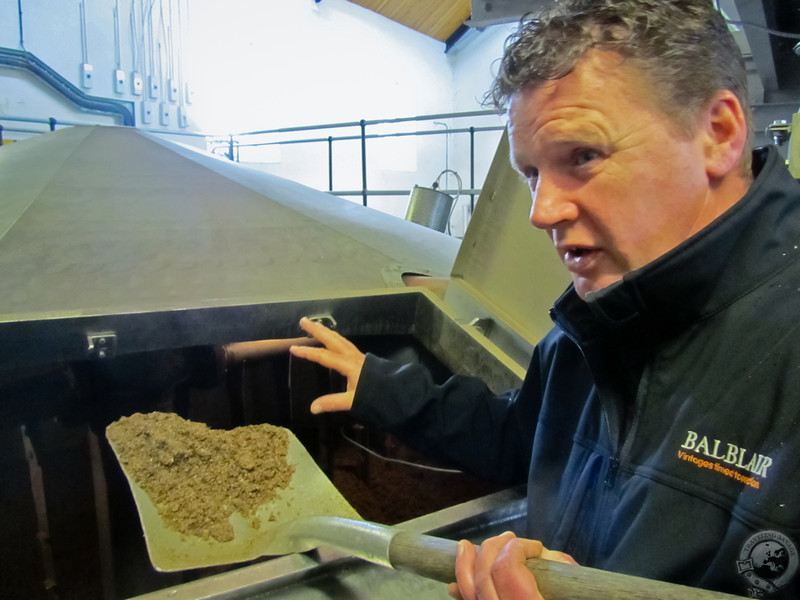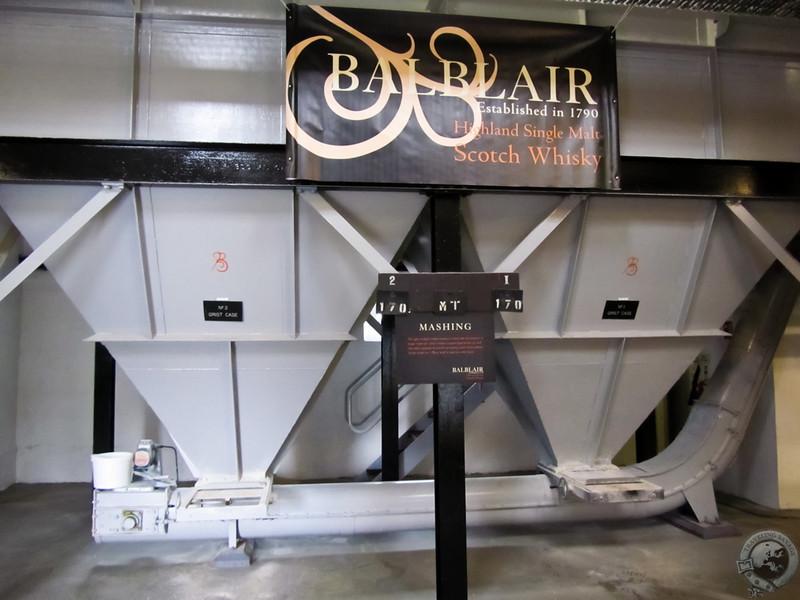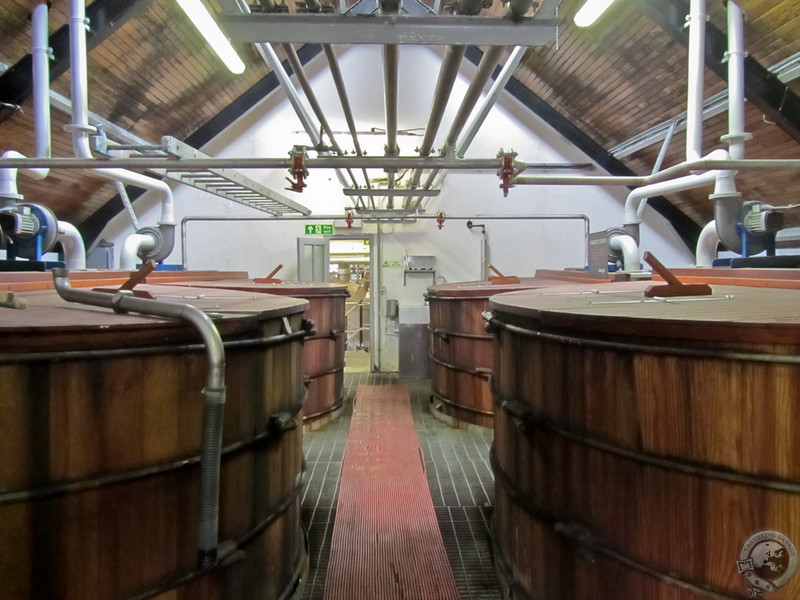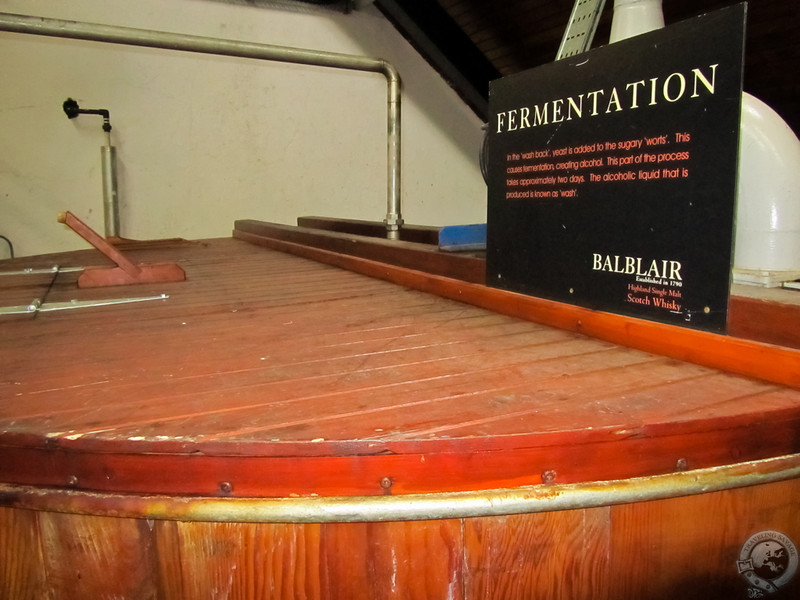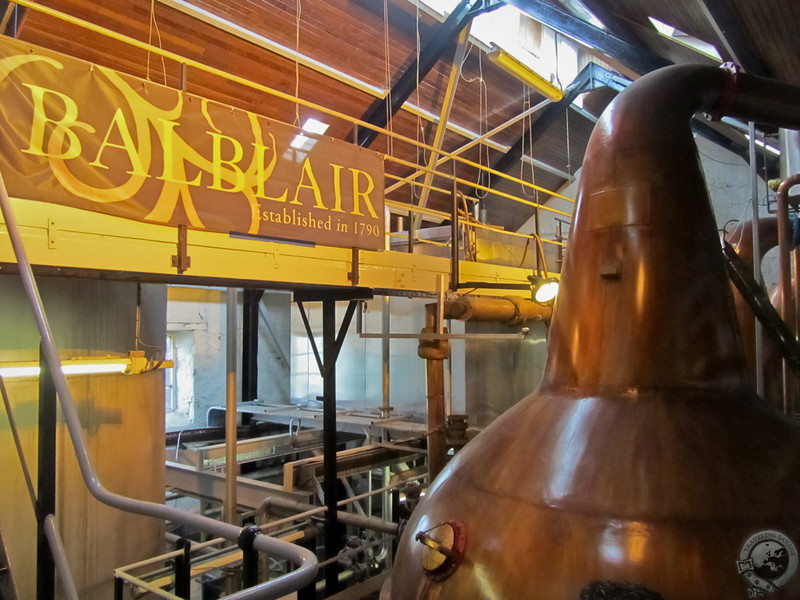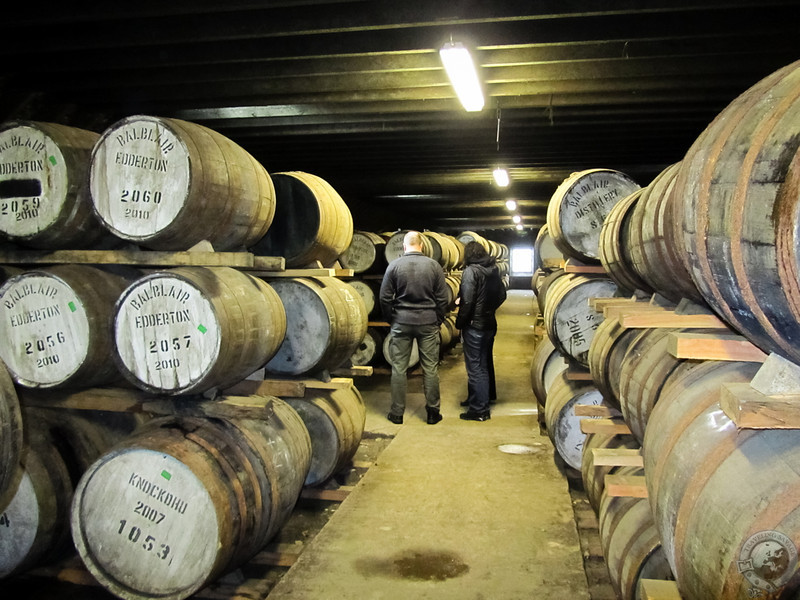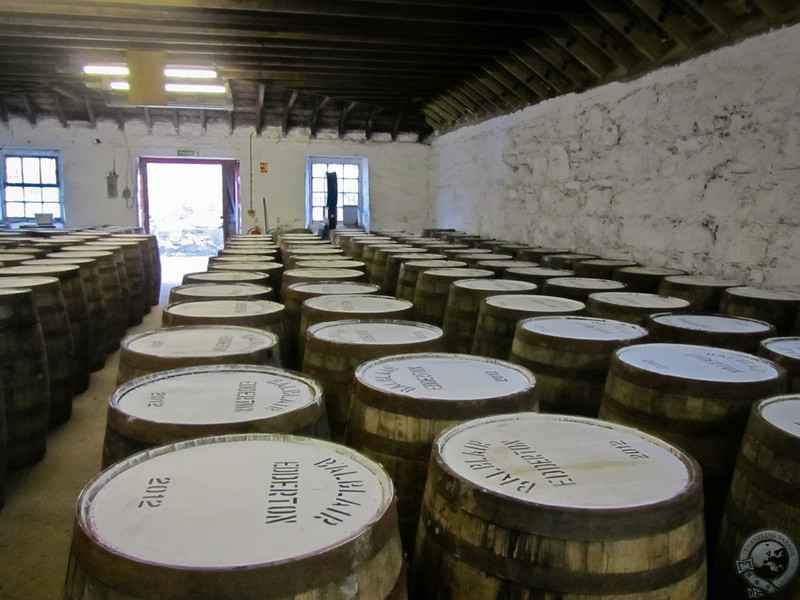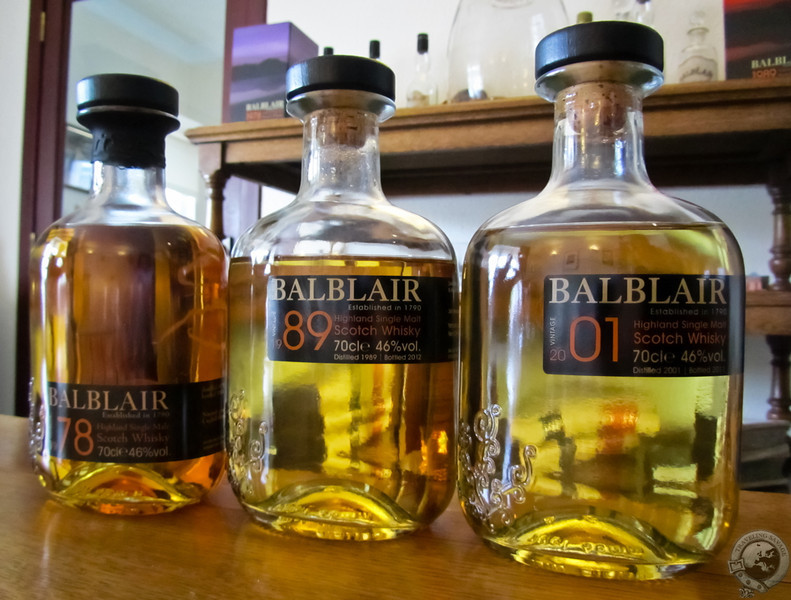It feels appropriate to write about Balblair distillery after tackling Glenmorangie last week because the two distilleries, though near each other geographically, are separated by a wide gulf within the whisky industry. From volume to brand recognition to product experience, the two exist, if not on opposite poles, at least far apart from each other.
Balblair is a small highland distillery perched on the Dornoch Firth in the tiny town of Edderton north of Inverness. The landscape is hilly and forested, slashed by watery inlets and drenched by the frequent rainstorm, and it feels like the perfect place to lay down barrels of whisky to let time and the elements work their magic.
My dad and I arrived to Balblair on one of these rainy, northern Scottish days to meet assistant manager Graeme Bowie. For a distillery that has only a handful of staff working at any one time, it’s a big deal to spend close to two hours with visitors. Graeme had a gruff congeniality about him that meshed with his humble take on their production. Here was a guy you wanted to share a dram with. We started in Balblair’s new visitor’s area where we learned about the distillery’s history. There’s a lot of it. The first known records of Balblair stretch all the way back to 1749, though the distillery was officially founded in 1780 by local farmer John Ross. In 1894, the distillery was rebuilt to be closer to the railroad but by 1911 it had stopped production and remained silent for the next 40 years. Balblair boomed back to life in the 50s and 60s, all the while changing ownership, until in 1996 Balblair found its current home with Inver House Distillers.
After the multimedia exposé, we followed Graeme into the rain and made our way into the mash house. We passed the comforting sight of the fire-engine red Porteus mill and chatted by the mash tun. It’s been more than 40 years since Balblair malted their own barley, but all the rest of the mashing and fermentation work is done by hand – only distillation is computerized – and at that moment they had just finished a rare peated mash, with malt (53ppm) hauled in from Inverness. Graeme shoveled up some of the spent mash and I was surprised at its dryness. The distilling process is fraught with obstacles every step of the way. In the mash tun, you must have the right consistency of milled barley. Too coarse and you’re leaving sugars (aka potential alcohol) in the draff. Too fine and the water won’t flow through and you’ll wind up with a stuck mash. Malt is expensive, so they need to pull out every last bit of sugar. In the typically elegant and environmentally-friendly Scottish way, the protein-rich draff is given to local livestock.
The tight quarters of the fermentation room housed six Oregon pine washbacks where the wort from the mashing process enjoys a 50-hour fermentation with a batch of liquid yeast. These washbacks are essentially huge barrels in which the yeast create a strong beer. If you’ve read any of my other whisky articles, you know some distilleries use steel washbacks. Graeme pointed out they only use steam to clean the wooden washbacks while steel washbacks typically require chemicals. I don’t know which is better for making whisky, but I’d stick with the traditional, chemical-free ways if it was up to me. As usual, I stuck my head into a roiling washback hoping to experience the vaunted CO2 kick off-gassing from the yeast – I’d struck out on about 40 other occasions. Wish granted. It felt like a mule kicked a jar of horseradish up my nostrils. Whoa!
There was some repair work going on in the stillhouse, which was at its most atmospheric as two fat stills thrummed and poured heat into a pipe-laden room that’d had its windows thrown open to bring in damp air and the omnipresent sound of rainfall. Balblair has one spirit still and one wash still doing the work here, as well as an old still from 1969 that is little more than decoration. Other than a four-week silent season in July and August, these stills are producing 1.8 million liters of spirit each year. Only 12% of that production goes toward Balblair’s single malt; the rest is sold to companies like Chivas, Whyte & McKay, and others who view Balblair’s newmake as an ideal blending component. Did I mention the stills were fat? Man were they fat.
We darted across the yard and into one of Balblair’s eight warehouses. All of their whisky ages on site in close to 26,000 casks, the vast majority of which (~90%) are second fill ex-Bourbon casks from Buffalo Trace. I admit, I got a little nervous upon hearing that tidbit (ed: Sherry guy here). The remainder are Sherry butts – Balblair doesn’t use any other casks – and Graeme hammered home the importance of sound wood policy. You can put poor newmake spirit into a good cask and find good whisky at the end, but a poor cask doesn’t care how good the newmake is that goes into it. It’s a mantra I’ve heard at other distilleries that make excellent whisky, places like Balvenie and Ardbeg, and it’s a key hint that the distillery might just make excellent whisky.
Our final escape from the rain came as we ducked into the marketing/tasting room. Most of Balblair’s whisky gets exported to places like France, Germany, Spain, the Middle East, and the USA. Balblair’s whisky comes in a series of vintages, much like Glenrothes, and each vintage statement is meant to represent the best whisky from that year. Their core range always has an old whisky, a young one, and one or two in the middle. During my visit, the range consisted of the 01, 89, and 78, though I believe the 01 has been replaced by the 02 and now there’s a 97 as well. The travel retail market also gets a couple exclusive vintages. All of Balblair’s whisky is non-chill-filtered and bottled at 46% ABV with natural color.
Graeme cracked open a few bottles and poured us the trio of core range drams (and a taste of the newmake – bottle it!). All of the Balblair’s whiskies are fruity with big mouthfeel and lingering finishes, and safe to consume without water. The 01 vintage evoked green apples, orange zest, and a handful of vanilla beans. The aromas were clear and gentle on the nose with no burn. The honey and malty sweetness on the palate mixed with spiciness I didn’t expect – black pepper – and clementine orange peel. Excellent!
The 89 vintage contains many of the same flavors and aromas as the 01, but a few deeper, darker notes like bananas and torched sugar. Other tropical fruits like pineapple and mango surfaced briefly before giving way to what must be a distinctive back-end black pepper-laced finish. This was a real winner for me, and my favorite of the lot.
The 78 vintage mixes rich spiciness with a freshness surprising in a 30-year-old whisky. Raisins and figs, cinnamon and oak – all are here fighting with those green apples, pears, and almonds. It’s hard to put this dram in a box, though not so hard to put it in your glass and enjoy it.
Graeme made it clear at the beginning of my visit: Balblair wants to host visitors who are really interested in whisky. On the surface, there’s not much similarity between Glenmorangie and Balblair. One glitters like the gold in Ali Baba’s cave, the other glows with a warm welcome. Graeme helped me understand the financial realities of running a small distillery, and I was impressed both by how they choose to run Balblair and the quality of their product. This is drive-across-the-state-to-buy-it whisky. I’m always eager to support an underdog, especially when it punches above its weight like Balblair.
Disclosure: I coordinated this visit, as usual, and Graeme kindly showed us around the distillery and poured a few complimentary drams. All opinions expressed here, as always, are my own.

